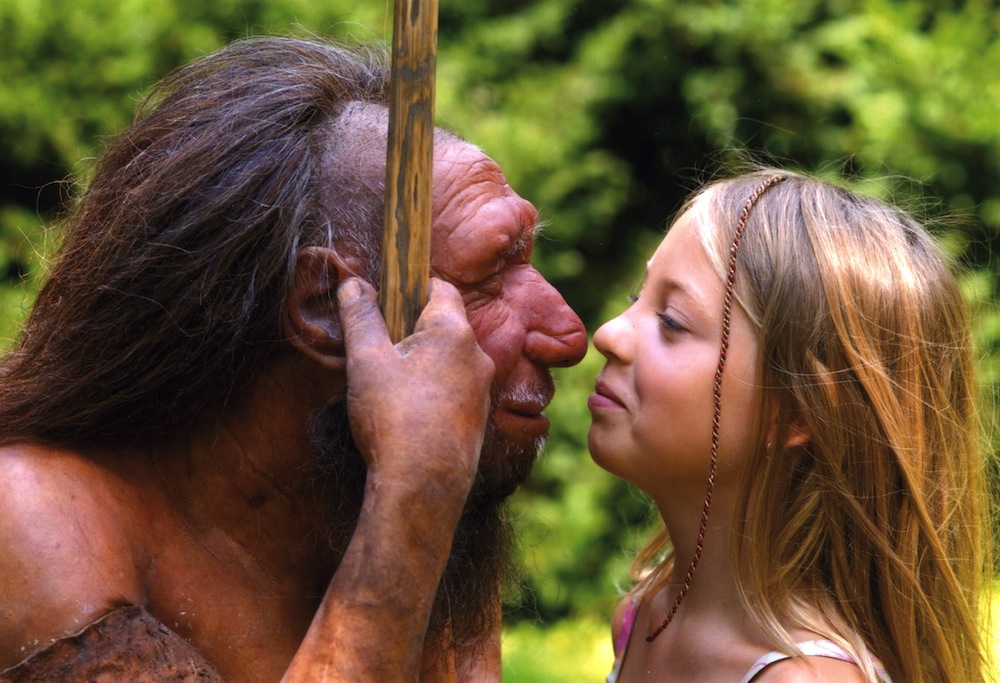Ancient Humans Had Sex with Mystery Relatives, Study Suggests

A new, improved sequencing of ancient human relative genomes reveals that Homo sapiens didn't only have sex with Neanderthals and a little-understood line of humans called Denisovans. A fourth, mystery lineage of humans was in the mix, too.
As reported by the news arm of the journal Nature, new genetic evidence suggests that several hominids — human relatives closer than humans' current living cousin, the chimpanzee — interbred more than 30,000 years ago. This group of kissing cousins included an unknown human ancestor not yet revealed by the ancient DNA record.
"It's implied it could be something like Homo erectus or similar," said Carles Lalueza-Fox, a paleogenomics researcher at Pompeu Fabra University in Spain, who was not involved in the research, but who was present at a talk on the findings given by lead author David Reich of Harvard Medical School at a meeting on ancient DNA sponsored by the Royal Society in London on Nov. 18. Homo erectus is an extinct species of human that originated in Africa and spread into Asia. [See Images of Our Closest Human Ancestor]
Ancient human lineages
Neanderthals are an extinct group of humans who lived between about 30,000 and 130,000 years ago. Despite their reputation as bone-headed dummies, Neanderthals were likely as advanced as modern humans in areas such as tool-making, though they were probably less socially adept.
Denisovans are a far more mysterious group. These early humans lived in Siberia and probably split off from the branch of the human family tree that would eventually give rise to Neanderthals about 300,000 years ago. Little is known about how Denisovans lived and what they looked like.
But genetic analyses of Neanderthals, Denisovans and modern humans suggest the three groups occasionally had sex and produced offspring. Denisovan genes show up in modern Pacific Islanders and in people from Southeast Asia and southern China. Neanderthal genes appear in 1 to 4 percent of modern Eurasian people, suggesting that Homo sapiens and Neanderthals interbred after modern humans trekked out of Africa.
Get the world’s most fascinating discoveries delivered straight to your inbox.
For unknown reasons, Homo sapiens are the only human survivors, as all others in the Homo genus eventually went extinct.
New genomes, new discoveries
The new research has been submitted to a scientific journal for publication. Under the journal's rules, lead author Reich cannot speak to the news media about the study until the paper comes out.
A Nature News reporter who attended the Nov. 18 talk, however, reports that Reich and his colleagues have created much more complete sequences of the Denisovan and Neanderthal genomes than those used in previous research.
The sequences confirmed previous findings that Denisovans mated with the ancestors of Pacific Islanders and East Asians, but also revealed a surprise: Genetic traces of an unknown population of human ancestors were found in the Denisovan gene, suggesting even more interbreeding than previously expected. Mark Thomas, an evolutionary geneticist at University College London, described the ancient environment to Nature as a "'Lord of the Rings'-type world" with many human populations living side-by-side.
Lalueza-Fox said the question of the mystery fourth ancestor is a "paleontological debate," but that the genetic work done by Reich and his colleagues opens the door to a deeper understanding of the individual diversity of ancient human ancestors. New techniques will enable researchers to tease out original DNA from later contaminants, he said.
"Some samples that were considered not suitable for genomic approaches are now going to be good samples," Lalueza-Fox said.
In the past, Lalueza-Fox said, geneticists were stuck trying to extrapolate details about human evolution from modern human DNA. Now, he said, they can go directly to the ancient DNA.
"We have been trying to understand human evolution from the study of modern human genomes, but clearly we missed part of the picture, which is now emerging from ancient hominin genomes," Lalueza-Fox said.
Editor's note: The story was updated on Dec. 3 to correct "India" to "Africa" in the third paragraph.
Follow Stephanie Pappas on Twitter and Google+. Follow us @livescience, Facebook & Google+. Original article on LiveScience.

Stephanie Pappas is a contributing writer for Live Science, covering topics ranging from geoscience to archaeology to the human brain and behavior. She was previously a senior writer for Live Science but is now a freelancer based in Denver, Colorado, and regularly contributes to Scientific American and The Monitor, the monthly magazine of the American Psychological Association. Stephanie received a bachelor's degree in psychology from the University of South Carolina and a graduate certificate in science communication from the University of California, Santa Cruz.


